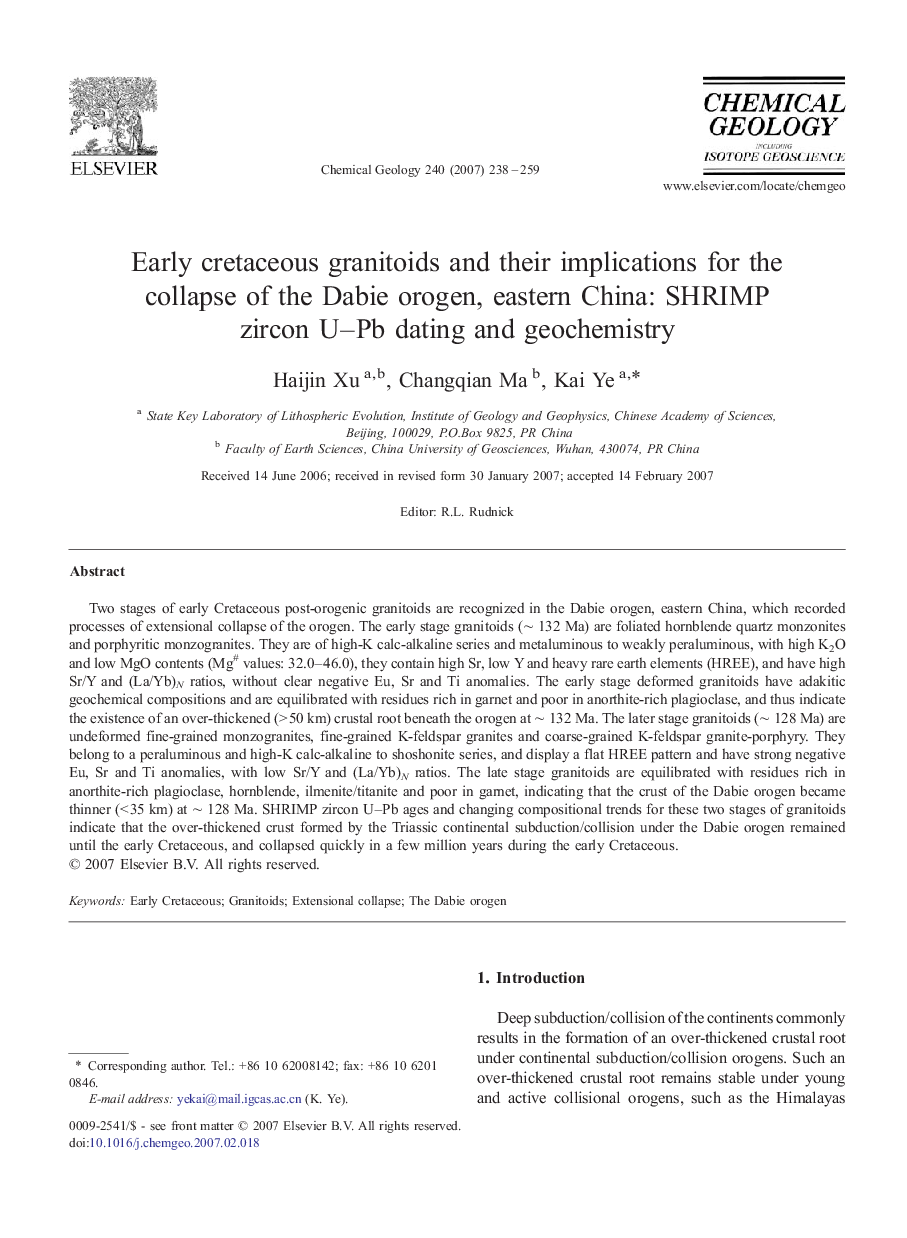| کد مقاله | کد نشریه | سال انتشار | مقاله انگلیسی | نسخه تمام متن |
|---|---|---|---|---|
| 4700884 | 1637749 | 2007 | 22 صفحه PDF | دانلود رایگان |

Two stages of early Cretaceous post-orogenic granitoids are recognized in the Dabie orogen, eastern China, which recorded processes of extensional collapse of the orogen. The early stage granitoids (∼ 132 Ma) are foliated hornblende quartz monzonites and porphyritic monzogranites. They are of high-K calc-alkaline series and metaluminous to weakly peraluminous, with high K2O and low MgO contents (Mg# values: 32.0–46.0), they contain high Sr, low Y and heavy rare earth elements (HREE), and have high Sr/Y and (La/Yb)N ratios, without clear negative Eu, Sr and Ti anomalies. The early stage deformed granitoids have adakitic geochemical compositions and are equilibrated with residues rich in garnet and poor in anorthite-rich plagioclase, and thus indicate the existence of an over-thickened (> 50 km) crustal root beneath the orogen at ∼ 132 Ma. The later stage granitoids (∼ 128 Ma) are undeformed fine-grained monzogranites, fine-grained K-feldspar granites and coarse-grained K-feldspar granite-porphyry. They belong to a peraluminous and high-K calc-alkaline to shoshonite series, and display a flat HREE pattern and have strong negative Eu, Sr and Ti anomalies, with low Sr/Y and (La/Yb)N ratios. The late stage granitoids are equilibrated with residues rich in anorthite-rich plagioclase, hornblende, ilmenite/titanite and poor in garnet, indicating that the crust of the Dabie orogen became thinner (< 35 km) at ∼ 128 Ma. SHRIMP zircon U–Pb ages and changing compositional trends for these two stages of granitoids indicate that the over-thickened crust formed by the Triassic continental subduction/collision under the Dabie orogen remained until the early Cretaceous, and collapsed quickly in a few million years during the early Cretaceous.
Journal: Chemical Geology - Volume 240, Issues 3–4, 15 June 2007, Pages 238–259